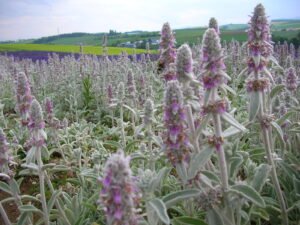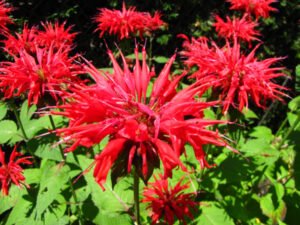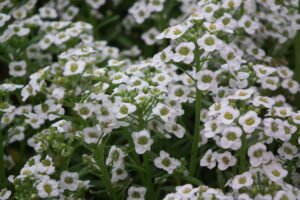Flower Plants That Spread Quickly
When building a garden, it’s natural to want plants that fill the space quickly and provide abundant blooms. Whether you want to create a lush garden in a short amount of time or fill in bare patches, choosing flower plants that spread quickly can be the perfect solution. These fast-spreading plants not only bring vibrant colors and textures to your garden but also help control erosion, outcompete weeds, and create a natural, thriving environment.
In this blog, we’ll explore a variety of flower plants that are known for their ability to spread quickly, giving you a beautiful, dynamic garden in no time. We’ll also cover essential planting tips, care requirements, and how to manage these vigorous growers to avoid them taking over your garden.
Why Choose Fast-Spreading Flower Plants?
Before diving into specific plants, it’s important to understand why you might want to choose fast-spreading flower plants for your garden. These plants are ideal for:
- Quick Coverage: They rapidly fill in empty spaces, providing ground cover and preventing erosion.
- Low-Maintenance: Many fast-spreading plants are hardy and require minimal care, making them ideal for gardeners who want beautiful results without constant upkeep.
- Weed Suppression: These plants can outcompete weeds by establishing themselves quickly, reducing the need for chemical or manual weed control.
- Creating Wildlife Habitats: Quick-spreading flower plants often attract pollinators like bees and butterflies, helping to support local ecosystems.
While fast-spreading plants are great for filling in spaces, it’s important to choose varieties that fit your garden’s needs and climate. Some can be invasive, so selecting the right plants for your environment is crucial.
1. Creeping Phlox (Phlox subulata)
One of the most popular ground covers, Creeping Phlox spreads rapidly and produces a carpet of colorful flowers in spring. Its dense, evergreen foliage makes it a great choice for rock gardens, slopes, and borders. Creeping Phlox thrives in sunny areas and comes in a variety of colors, including pink, purple, white, and blue.
Growing Tips:
- Sunlight: Prefers full sun but can tolerate partial shade.
- Soil: Well-drained soil is essential; avoid heavy clay soils that retain too much water.
- Watering: Water regularly during dry spells but avoid overwatering, as it dislikes soggy roots.
Creeping Phlox spreads through runners and can quickly cover large areas, providing a vibrant splash of color in early spring.

2. Daylilies (Hemerocallis)
Daylilies are fast-growing perennials that spread through underground rhizomes. Known for their bright, trumpet-shaped flowers, daylilies bloom in a variety of colors, including yellow, orange, pink, red, and purple. They’re incredibly hardy, thriving in a range of conditions and requiring little maintenance once established.
Growing Tips:
- Sunlight: Full sun to partial shade.
- Soil: Well-drained soil, though they are adaptable to various soil types.
- Watering: Water regularly, but once established, daylilies are fairly drought-tolerant.
Daylilies can spread quickly, so you may need to divide them every few years to prevent overcrowding and maintain vigorous blooming.
3. Creeping Jenny (Lysimachia nummularia)
If you’re looking for a fast-growing ground cover with a unique look, Creeping Jenny is a great option. It spreads aggressively, producing low-growing mats of round, bright green or golden-yellow leaves. In summer, it blooms with small yellow flowers. Its trailing habit makes it ideal for filling in spaces around taller plants or spilling over the edges of containers.
Growing Tips:
- Sunlight: Grows well in full sun to partial shade, though its golden variety does best with more sunlight.
- Soil: Moist, well-drained soil.
- Watering: Keep the soil consistently moist, especially during hot weather.
Creeping Jenny spreads quickly and can be invasive if not controlled, so it’s best to plant it in containers or areas where its growth can be managed.
4. Lamb’s Ear (Stachys byzantina)
With its soft, silvery-green leaves and fast-spreading habit, Lamb’s Ear is a popular choice for ground cover and borders. Although its flowers are not the main attraction (they produce small purple spikes in summer), the fuzzy, velvety leaves create a beautiful contrast in any garden. Lamb’s Ear is drought-tolerant and thrives in poor soils, making it a great low-maintenance plant.
Growing Tips:
- Sunlight: Full sun to light shade.
- Soil: Well-drained, dry to average soil.
- Watering: Water sparingly once established, as it is drought-tolerant.
Lamb’s Ear spreads via runners and can quickly form dense mats, so it’s a good choice for covering large areas in dry, sunny spots.
5. Ajuga (Ajuga reptans)
Also known as Bugleweed, Ajuga is a fast-growing ground cover that produces spikes of blue, purple, or white flowers in spring and early summer. Its attractive foliage, which ranges from green to bronze or purple, adds visual interest to the garden year-round. Ajuga spreads via runners and can tolerate a variety of conditions, including poor soils and shade, making it an ideal choice for difficult spots.
Growing Tips:
- Sunlight: Thrives in full sun to partial shade.
- Soil: Adaptable to most soils but prefers moist, well-drained soil.
- Watering: Water regularly, especially during dry periods.
Ajuga can spread aggressively, so it’s important to monitor its growth to prevent it from overtaking other plants.
6. Black-Eyed Susan (Rudbeckia hirta)
Black-Eyed Susan is a native wildflower known for its bright yellow petals and dark centers. These perennials spread quickly through self-seeding and rhizomes, creating colorful patches that bloom from summer to fall. Black-Eyed Susans are easy to grow and attract pollinators like bees and butterflies, making them a valuable addition to any garden.
Growing Tips:
- Sunlight: Full sun.
- Soil: Well-drained soil, though they are quite adaptable.
- Watering: Drought-tolerant once established, but water regularly in the first year.
As Black-Eyed Susans spread through self-seeding, you may find them popping up in unexpected places, which adds a natural, wild feel to your garden.
7. Bee Balm (Monarda didyma)
Bee Balm is a fast-spreading perennial that produces vibrant clusters of red, pink, purple, or white flowers. As the name suggests, Bee Balm is a favorite among pollinators, attracting bees, butterflies, and hummingbirds. Its flowers are long-lasting and bloom throughout the summer, adding a burst of color to your garden.
Growing Tips:
- Sunlight: Full sun to partial shade.
- Soil: Moist, well-drained soil.
- Watering: Water regularly to keep the soil evenly moist.
Bee Balm spreads via rhizomes and can quickly form dense colonies. To keep it from overtaking other plants, divide it every few years.
8. Sweet Alyssum (Lobularia maritima)
Sweet Alyssum is a low-growing, spreading plant that produces clusters of tiny, fragrant flowers in shades of white, pink, purple, and lavender. This annual (or short-lived perennial in warmer climates) is perfect for ground cover, borders, or cascading over containers. Sweet Alyssum spreads by reseeding itself, providing continuous blooms throughout the growing season.
Growing Tips:
- Sunlight: Full sun to partial shade.
- Soil: Well-drained soil.
- Watering: Water regularly, especially in hot, dry conditions.
Sweet Alyssum is relatively easy to grow and will spread quickly in the right conditions, providing a carpet of color and fragrance.
9. Coreopsis (Coreopsis verticillata)
Commonly known as Tickseed, Coreopsis is a fast-spreading perennial that produces bright, daisy-like flowers in shades of yellow, red, and orange. It’s a long-blooming plant, flowering from early summer through fall, and attracts pollinators like butterflies and bees. Coreopsis is drought-tolerant once established and can thrive in poor soils, making it an easy-care plant for gardens and borders.
Growing Tips:
- Sunlight: Full sun.
- Soil: Well-drained, average to poor soil.
- Watering: Drought-tolerant, so water sparingly once established.
Coreopsis spreads through self-seeding and underground rhizomes, making it an excellent choice for filling large areas with vibrant, long-lasting blooms.
10. Purple Coneflower (Echinacea purpurea)
Purple Coneflower is a native perennial that produces large, daisy-like flowers with purple petals and a distinctive orange-brown center. These hardy plants spread through self-seeding and are drought-tolerant once established. Purple Coneflowers bloom from midsummer to fall and are a favorite among pollinators, especially butterflies and bees.
Growing Tips:
- Sunlight: Full sun.
- Soil: Well-drained soil.
- Watering: Drought-tolerant once established; water regularly in the first year.
Purple Coneflowers can spread quickly, especially in favorable conditions, creating a stunning display of color throughout the summer.
Managing Fast-Spreading Plants
While fast-spreading flower plants can quickly create a beautiful, full garden, they can sometimes become invasive if left unchecked. Here are a few tips for managing these vigorous growers:
- Regular Pruning: Prune plants as needed to control their size and prevent them from overtaking other areas of your garden.
- Divide Perennials: Many spreading perennials benefit from being divided every few years. This not only controls their spread but also helps rejuvenate the plants and encourages more vigorous growth.
- Containment: Plant fast-spreading plants in containers or raised beds to prevent them from spreading uncontrollably.
- Monitor Growth: Keep an eye on your plants and remove any runners or seedlings that pop up in unwanted areas.
Short Summary
Incorporating fast-spreading flower plants into your garden is a fantastic way to create a lush, vibrant landscape in a relatively short amount of time. With the right selection of plants and proper management, you can enjoy a garden that’s full of color, texture, and life. Whether you’re looking to fill empty spaces, reduce weeds, or attract pollinators, these vigorous growers will help you achieve a flourishing, dynamic garden.
Happy gardening!










